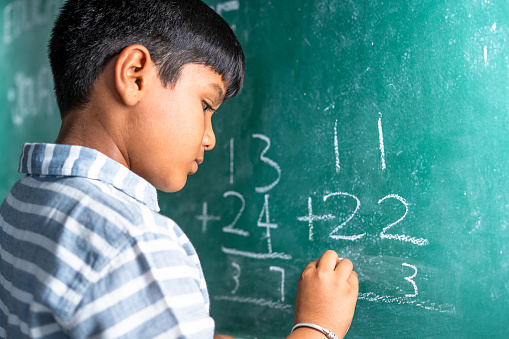5 Computational Skills Students Can Use to Solve Problems
Computational thinking is a skill students can use to solve problems. It involves developing a step-by-step process that is replicable. It also helps students understand and interpret clear instructions. Ultimately, it allows students to predict results and communicate them to others. This skill is critical for many career paths and is crucial for students who are interested in math and science.
Computer programming is a form of computational thinking
Computational thinking is the process of organizing and solving problems through abstraction. The process involves ignoring irrelevant details and concentrating on the most important parts of a problem. In computing, this method is vital in overcoming many problems. In order to solve a given problem, programmers must focus on identifying the relevant, essential parts of a problem and then interpreting those parts into instructions.
This process entails putting together a roadmap and workflow. It also requires conditional logic, which means that certain steps are only performed if certain conditions are met. For example, an algorithm that determines whether a dustbin needs to be emptied would only make sense if the dustbin is already full. Computational thinking can be learned and mastered over time. Moreover, learning to code and program is an excellent way to get children involved in a creative and intellectual environment.
The process of computational thinking involves training the brain to think in a structured manner. By doing so, students will learn to break down problems into simple, structured steps. Computational solutions can be applied by humans, machines, or a combination of humans and machines. The process of problem solving starts long before the first line of code is written.
Computational thinking is an important skill in the 21st century. It has been promoted as a literacy for the 21st century and implemented in various curricula around the world. Some have even referred to computational thinking as the foundation for programming. Researchers in this field have analyzed the ways in which computational thinking contributes to quality programming.
Computer programming is a form of computational thinking, as the programmers involved in this process break problems down into smaller, understandable pieces. They outline the solution, identify patterns, and eliminate the extraneous elements.
Pattern generalization
In computational thinking, pattern generalization is a skill that helps you find similar things in many different situations. For example, many LEGO sets have similar parts. If you’re looking for a LEGO car, you’ll probably see that you need to build four wheels the same way. This skill allows you to find relevant details in a situation and throw away the irrelevant ones. It’s also a skill that can be useful in solving problems and making predictions.
Children who learn computational skills become more articulate and better able to solve problems. They can explore cause and effect, analyze actions, and predict future events. These are important skills that can impact children’s behavior and relationships. In fact, computational thinking is the bread and butter of computer scientists. And while it is often associated with computers, it can be applied to a variety of other situations.
Abstraction
Abstraction is a cognitive skill that helps a person think abstractly. For example, a person who rides a bicycle does not need to know how the bike works to get around. Similarly, a person who drives a car doesn’t need to know every detail of the engine. All they need to know is how to give the car gas at the right times, brake when necessary, and turn the wheel. Abstraction is one of the key components of computational thinking and can be taught through various approaches.
The skill of abstraction can help you understand a problem more clearly by hiding unnecessary details. By choosing the right detail to hide, you can make complex algorithms and whole systems easier to understand. A key part of abstraction is determining what kind of representation is appropriate for the problem. Different representations make different things easier or more difficult to understand.
Abstraction is often used to simplify complicated strings of code. It makes algorithms easier to understand, and makes communication with digital tools more convenient. Additionally, it helps people return to a larger problem after figuring out the smaller details. By understanding abstraction, students can avoid getting overwhelmed by problems that seem difficult and complicated. Abstraction improves problem-solving skills, and helps students persevere and iterate.
In a block-based coding environment, it is difficult to provide students with computational problems that will strengthen their abstraction skills. This makes it important for computer science teachers to provide concrete examples and principles to help students solve problems. To this end, we investigated how blocks-based programming environments affected secondary school students’ abstract thinking skills.
Pattern recognition
Pattern recognition is an important computational skill, which helps people identify similar objects and patterns in their environment. It is closely related to abstraction, but it is generally considered to be a distinct skill. It involves ignoring irrelevant details and identifying the aspects of a situation that repeat. Pattern recognition is an important skill for people who write computer code.
Pattern recognition is the ability to group elements in a logical manner along a certain quantitative dimension. Hence, this skill is also an important problem-solving skill. In this paper, we will discuss the development of a mobile pattern recognition application that can help students improve their computational thinking skills.
The process of pattern recognition is vital to the development of computational thinking. Students use this skill to simplify problems by identifying patterns that are similar to previously observed situations. Then, they can apply the inferred rules to new instances. As a result, students can develop the ability to analyze trends and predict outcomes.
The BBC outlines four cornerstones of computational thinking: decomposition, pattern recognition, abstraction, and algorithms. Pattern recognition encourages students to break down complex problems and make connections between relevant pieces of data, ignoring irrelevant ones. Using algorithms, students can solve problems by applying algorithms that make sense of the data and make it easier for them to process it.
Working memory
Working memory is a computational skill that helps us learn and retain information. It also helps us understand the complexities of a problem and the steps that must be taken to solve it. In one study, students were given a working memory training task in which they were required to remember the colors of three circles and a semi-circle. They were also asked to remember the letter that was printed inside a geometric figure. Students were then required to write the letter and the color that they remembered within 10 seconds.
Several studies have proven that training of working memory improves learning and performance. One such study examined the effects of different types of training on working memory. It found that people who took the training saw a significant improvement in verbal and visuospatial working memory tasks. Moreover, those who performed the training showed improvements in their scores on several tests.
The study also found that the ability to use working memory is correlated with mathematical performance in adults and typically-developing children. However, the study did not find a direct correlation between working memory and performance on algebra. Therefore, the findings suggest that there are other, more significant factors that predict learning success.
Although there are many theories about the working memory, the basic concept is that it is a limited set of active memories. The brain naturally limits its size because it is an expression of computational efficiency. Because working memory is so small, training methods for this skill should capitalize on both short and long-term memory props to help students learn. However, working memory training procedures are often task-specific, providing limited skill transfer. For example, a program for computer programming should concentrate on learning algorithms to increase the amount of information that can be retained.
Working memory training also helps children to learn how to divide their attention between processing information and storing it. This helps them to select relevant information and suppress information that is irrelevant to the task at hand. This is very relevant for the learning of mathematics. For example, algebra requires the application of multiple rules and concepts at the same time.



